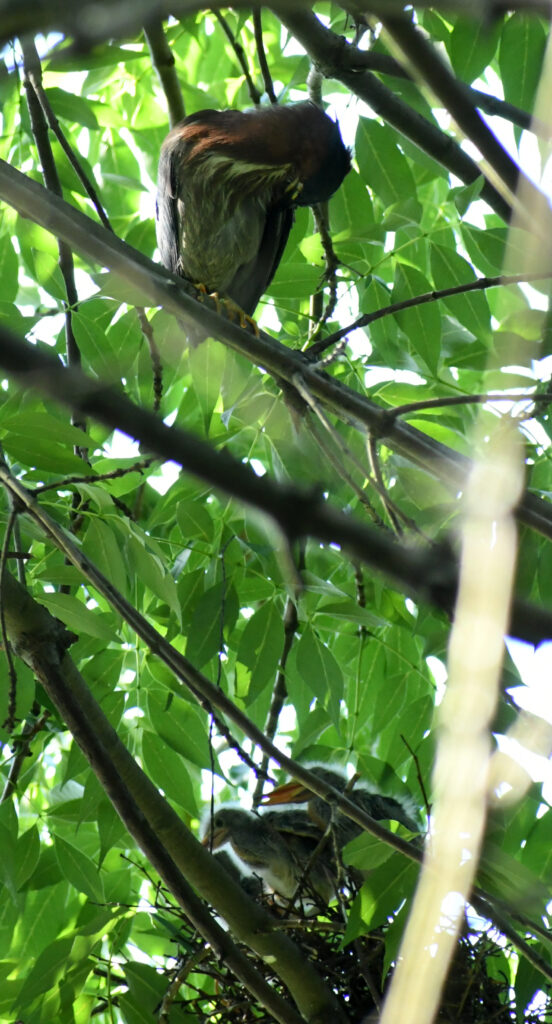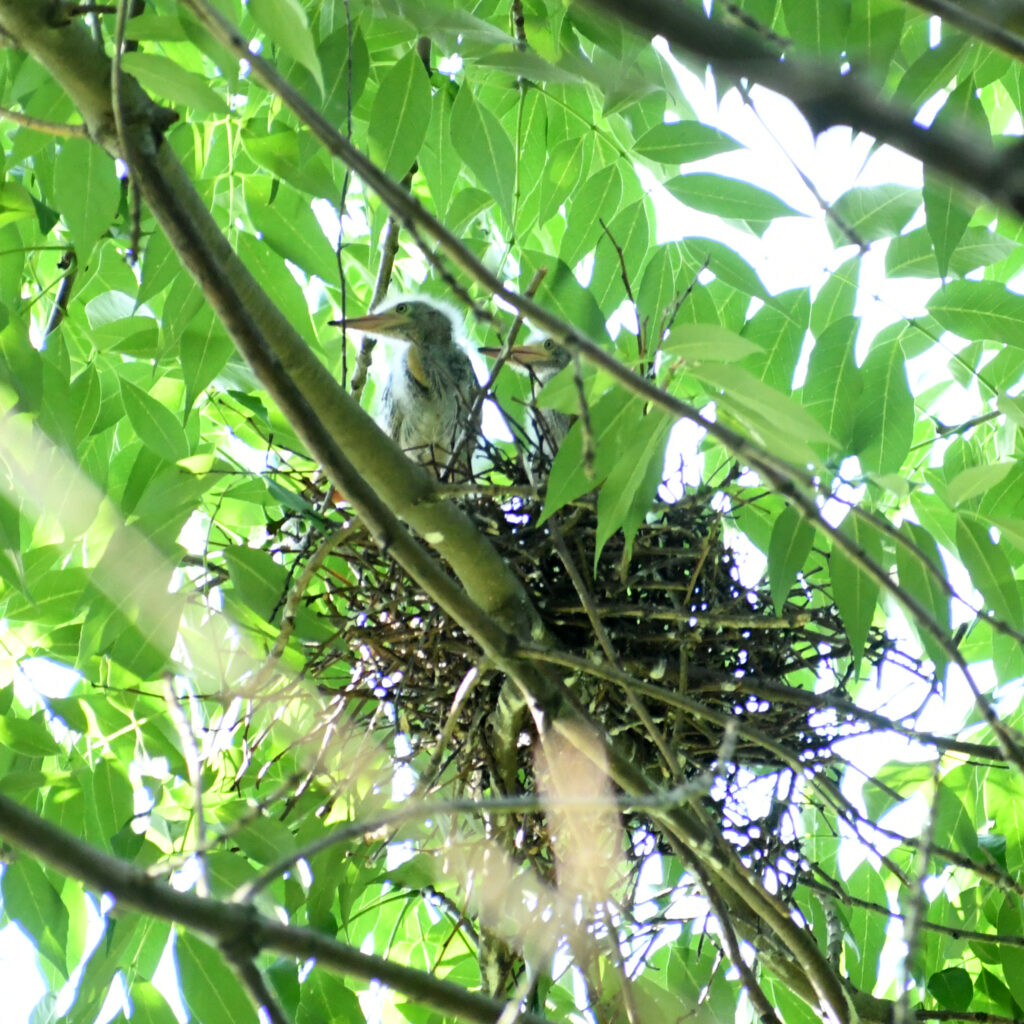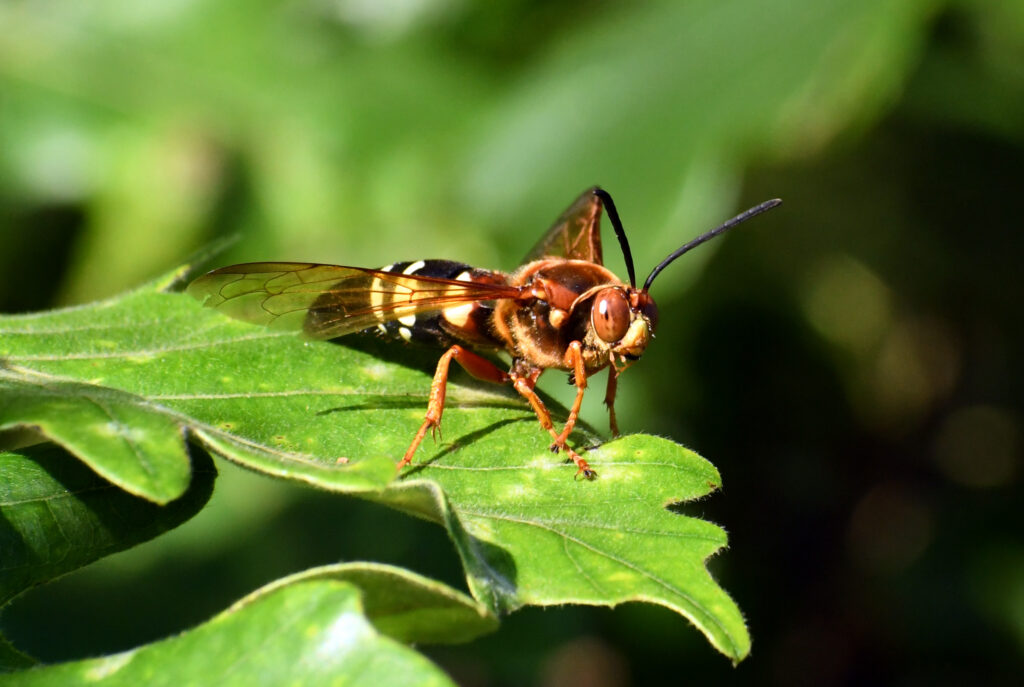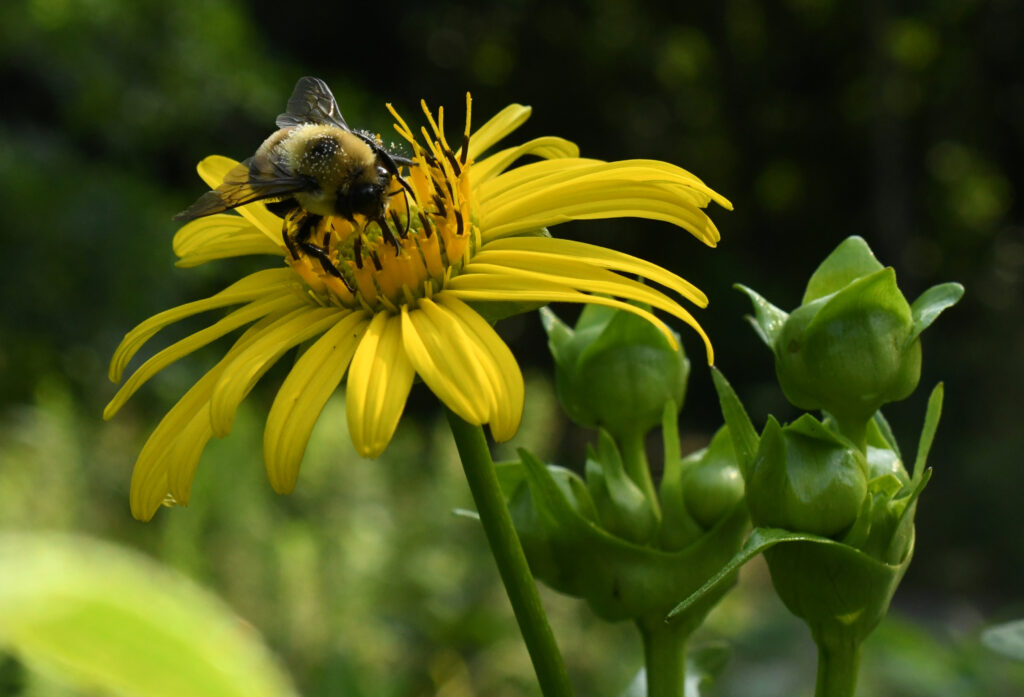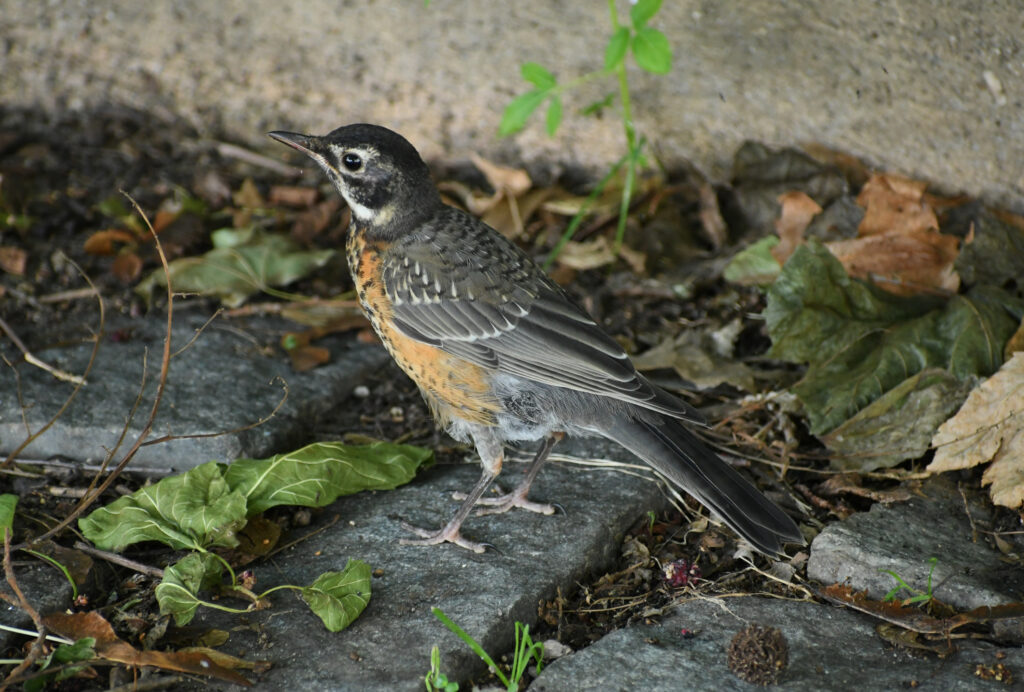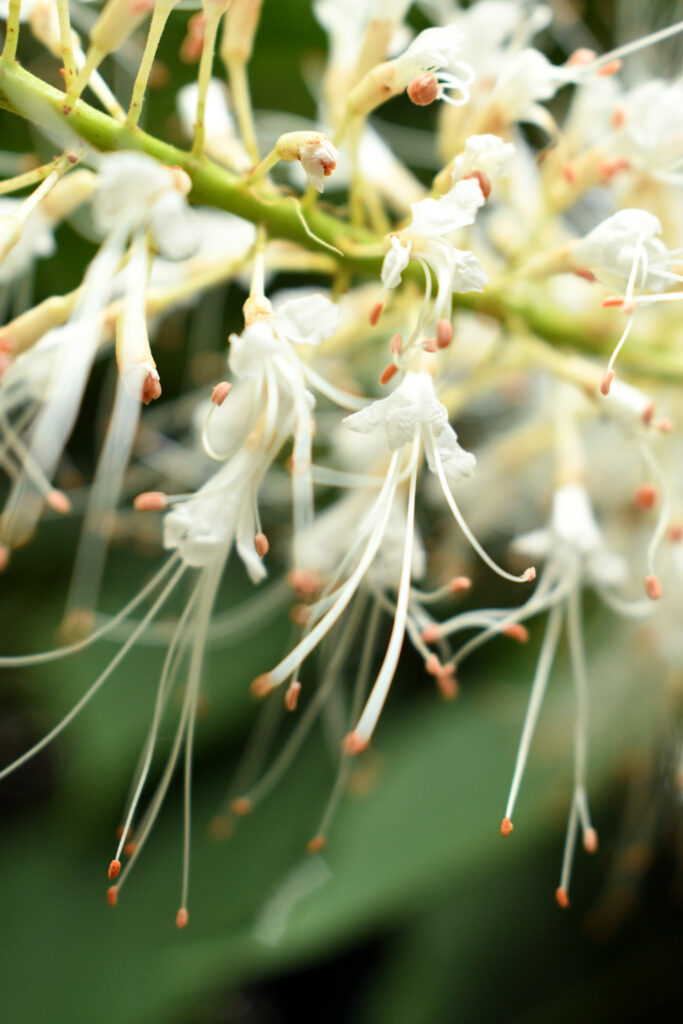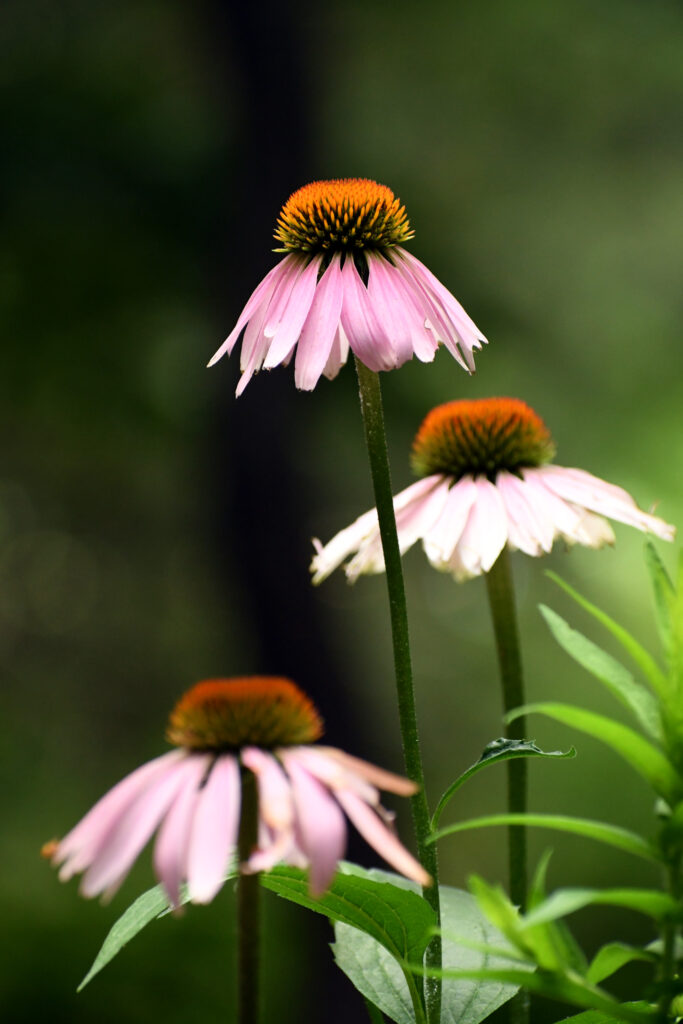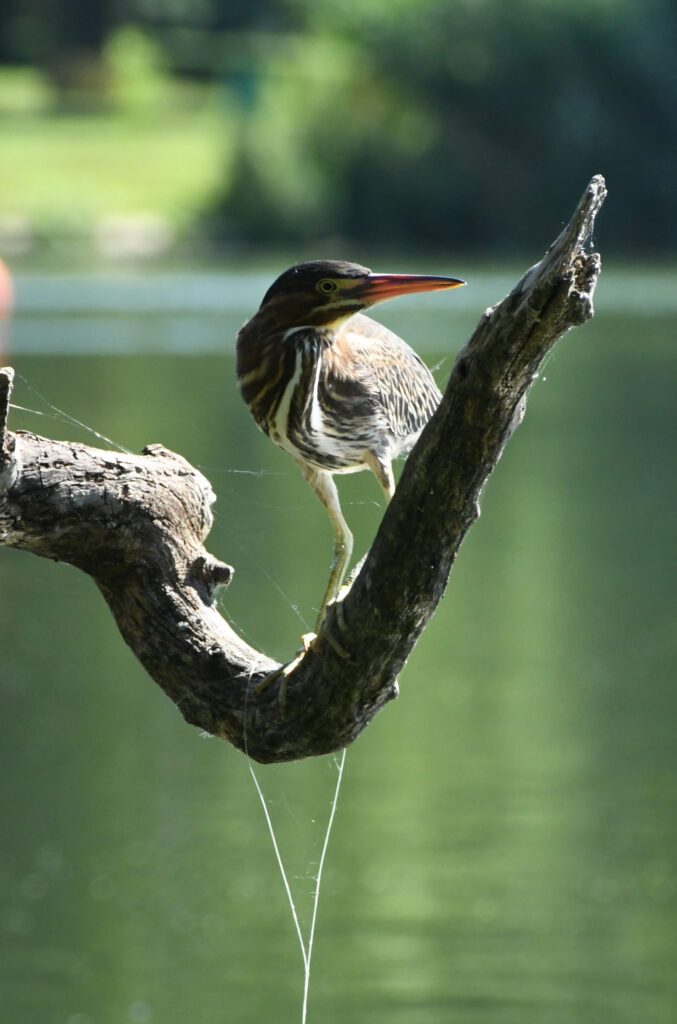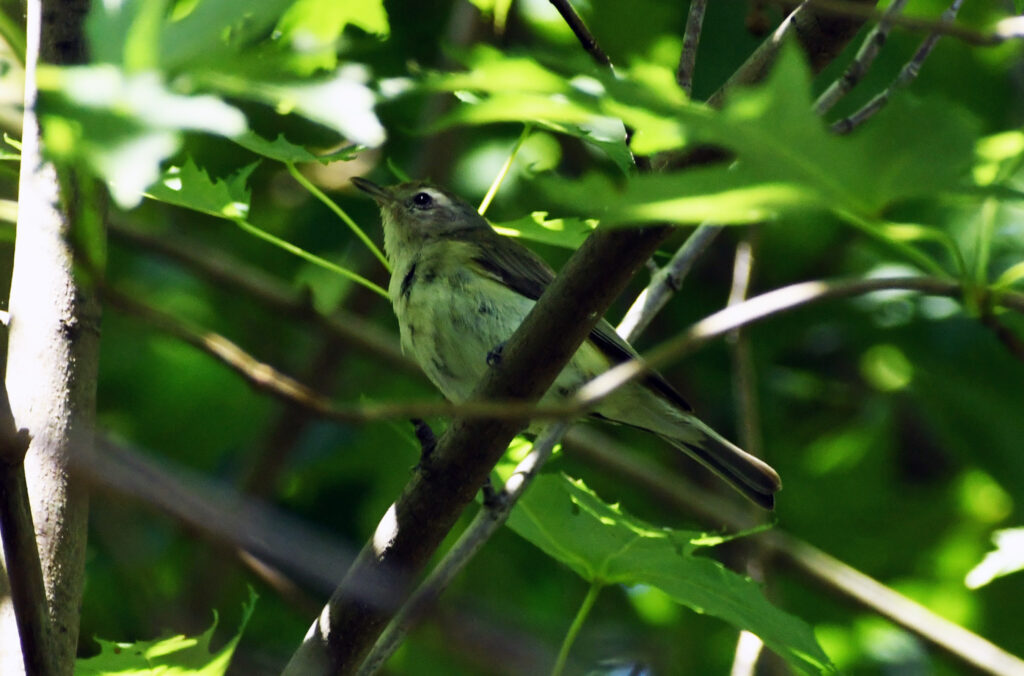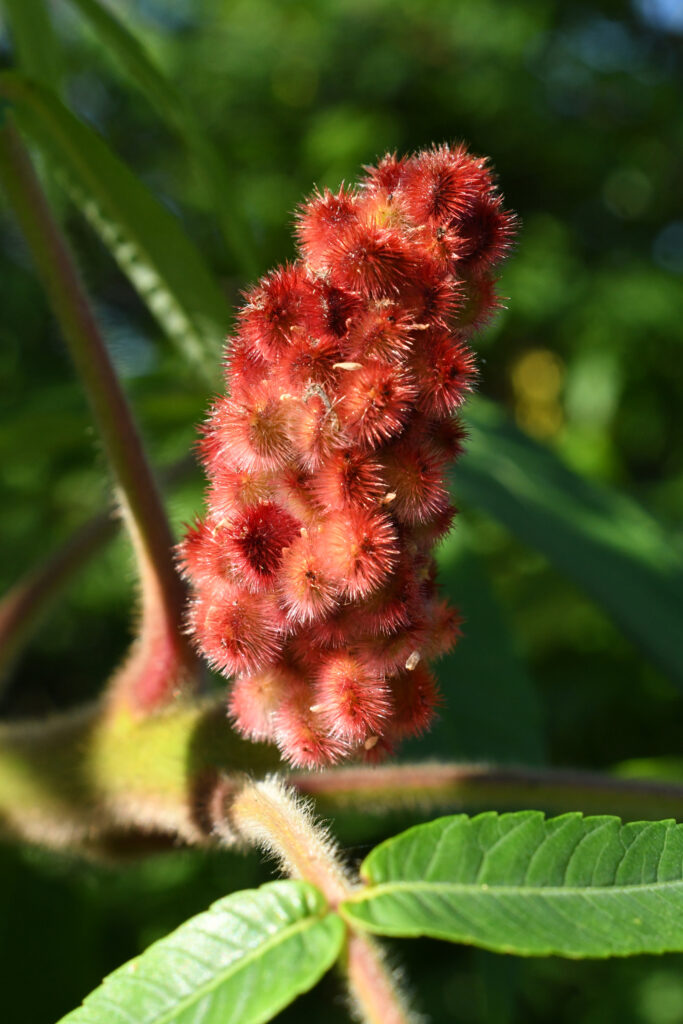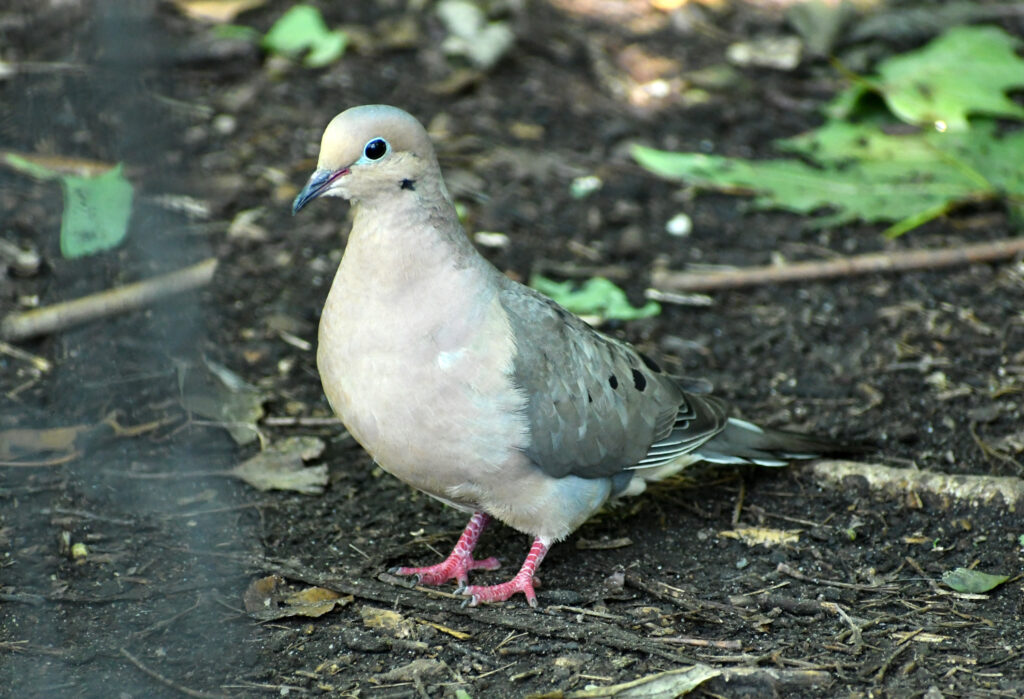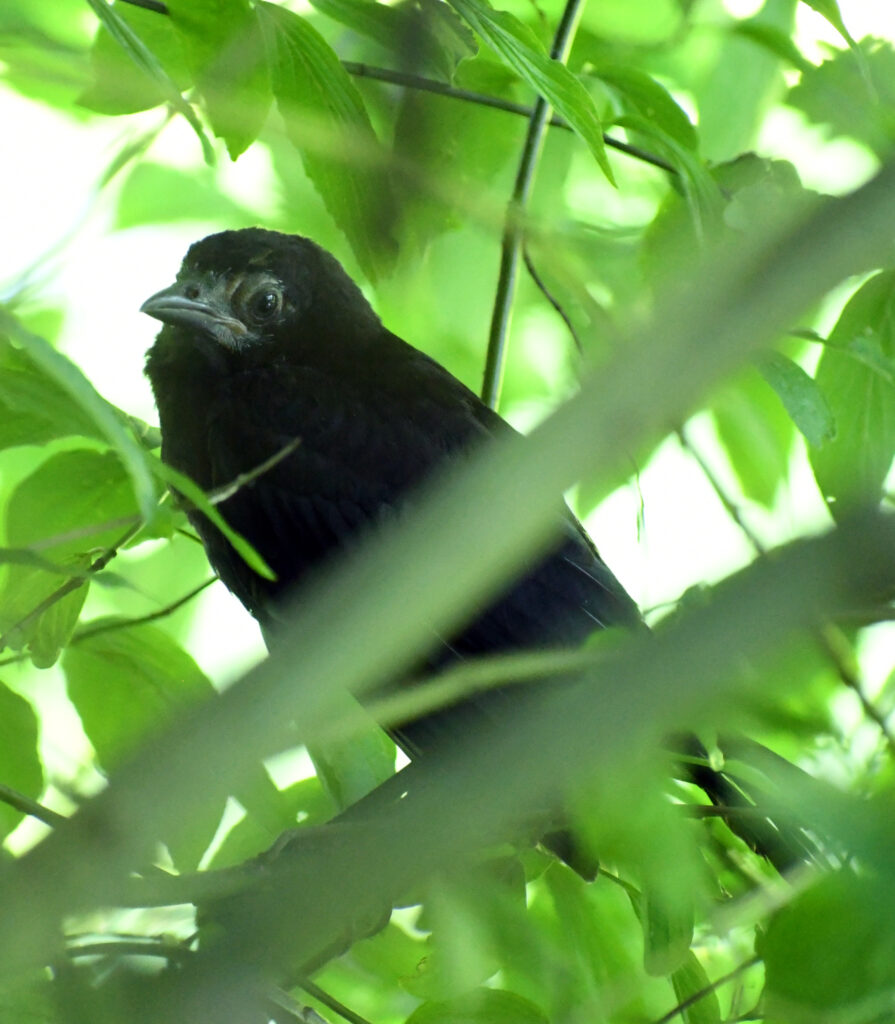Last week a fellow birder showed me photos that he had taken of green heron chicks in a nest. He told me where the nest was, roughly, but I wasn’t able to find it that day. This morning, a fellow dog walker who knows I take bird pictures flagged me down to tell me she had seen the nest, too, and explained the location a little more clearly. But once I got to the spot, all I could find was a paper wasps’ nest, busy with traffic. (Another kind of wasp, Eastern cicada killers, were out in a field in large numbers, busy not with a nest but with one another; maybe they were mating?) At last I did see a green heron, preening herself, in a tree between the path where I was standing and the water’s edge. “What a beautiful dog,” a man in a cap said, of Toby, who was waiting patiently, looped to a fence post, and after petting Toby, he joined me in trying to photograph the heron. After he left, a few bird photographers with professional tripods and lenses walked by. I asked one if he knew where the nest was; he admitted that there was one, but would only say that it was “around here,” and then added that the heron had flown away, in a tone that sounded meant to be discouraging. I kept looking. Finally another dog walker saw me peering into the trees, asked if I was looking for the heron’s nest, and pointed it out to me—a darkened smudge fairly high up.
Category: Prospect Park
Prospect Park, 7/16/2020
It’s been exactly a year since I started taking photos in the morning while walking the dog. I only posted them on Instagram at first, but my behavior looked suspicious to the algorithm (I can only post on Instagram by telling my laptop’s web browser to pretend to be a cell phone), and Instagram locked me out of my account after a few weeks, so I started putting the photos up here on my blog in August. The idea was to photograph time, the way the color and the feeling of everything changes. A friend sent me an email recently, after reading Overthrow, saying that he lived in California now and liked being reminded of seasons. This made me very happy, because almost the first thing I imagine about a story is when in the year it’s happening (and also, when in the liturgical calendar, even though I’m not a churchgoer any more).
My initial plan was to take a picture of the same vista every day, but even on day one, I could tell I didn’t have that much discipline. I just photographed what caught my eye. The first lens I had could do portraits, close-ups, and landscapes, but not long distance, so flowers and mushrooms were more likely subjects than birds or butterflies. It wasn’t until March that I got a second-hand telephoto lens, just in time for the spring migration season for warblers and their friends.
Almost my first impulse, when I see something that I want to take a picture of, is to be ashamed of wanting to photograph something so trite. Oh, that’s always there, I tell myself. Everyone sees that all the time. It’s not true. You may think, as a way of dismissing yourself, that there are going to be a lot of mornings when the sun slants through the grove of American sycamores, while its rays are being made visible by a mist, and that it isn’t special, but in a year, there was only one morning when that happened.
A dozen digital photos cost as much as one, so I take a lot, and sometimes, later, at home, while reviewing a series, I’ll discover that the moment that caught my eye was even briefer than I suspected while I was caught up in it—that the light was only at the necessary angle, and in the right hue, for a few seconds, for the first photo or two in the series.
There are two kinds of wild raspberries in Prospect Park—one with white flowers and compact berries, and one with pink flowers and dome-shaped, sweeter berries. I only figured this out a couple of days ago. Often, if a passerby asks me what I’m looking at, I mumble, because I don’t know. I aspire to being able to figure it out at home later, but I don’t even always manage this. Or they ask, “Are you looking at the hawk?” which I’m almost never looking at. For some reason, I almost never see a red-tailed hawk except in the evenings, when I don’t have my camera.
Is it peaceful to spend an hour in nature in the morning? I don’t know. There’s a lot of conflict in nature. Insects aren’t the friends of other insects. It occurred to me yesterday, while watching sparrows flitting about with the detritus of mostly-eaten insects sticking out of their beaks, Oh, they don’t have arms or hands, so they can’t wipe their mouths, and probably dinosaurs also went around with the gore of the last meal drooping from the sides of their maws. If I’m able to identify a flower, it often turns out to be invasive—to be a weed, basically, flourishing in large part thanks to human disruption of the landscape. But that’s the almost universal condition for flourishing, now; that’s what it is now to be alive.

